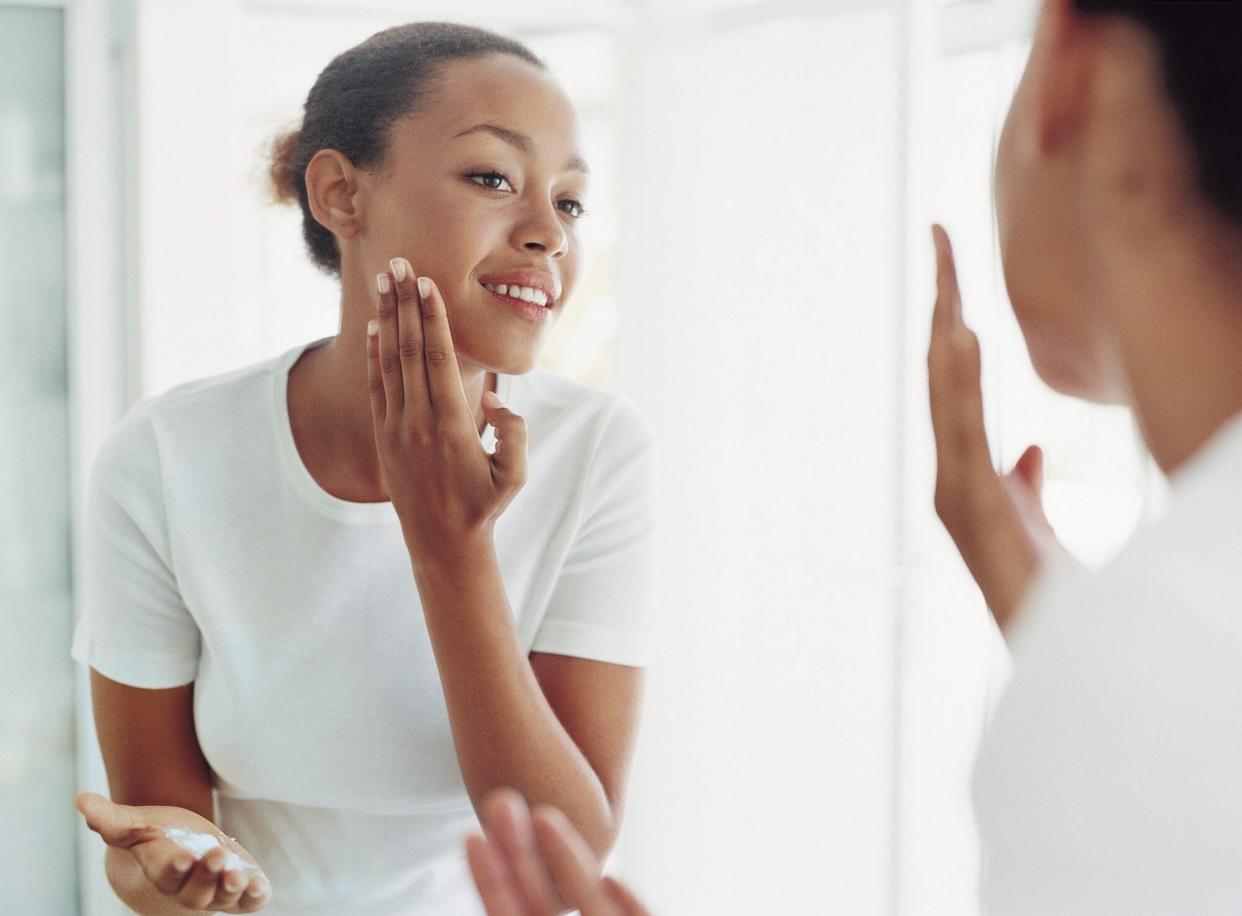The Truth About Skin Cycling: Will Rotating Your Routine's Most Impactful Products Really Improve Your Skin?

Sydney Shaffer / Getty Images
TABLE OF CONTENTS
On This Page
Skin Cycling, 101
How to Skin Cycle
Pros
Cons
When to Avoid
From slugging to LED masks, there are plenty of skin care trends that beauty gurus swear by. The latest buzzword making the rounds on TikTok? Skin cycling. Though the term just recently got its viral name, many dermatologists have been recommending the practice to patients for years. "Skin cycling is a trending term used to describe the process of rotating active ingredients in your skin care," says Nkem Ugonabo, MD, MPH, board-certified dermatologist at Unionderm.
Before jumping on the bandwagon, there are a few things you should know about skin cycling—like how to do it properly, the skin concerns it's ideal for treating, and the best ingredients to include in your routine.
Related: Can You Use a Retinol Product While Slugging?
What Is Skin Cycling?
For Julie Russak, MD, FAAD, board certified dermatologist and founder of the Russak Dermatology Clinic, the easiest way to explain skin cycling is to compare it to interval training for your muscles, which is when you alternate between exercise and recovery times.
Rather than applying all of your skin care staples on one night, you will cycle through products with active and inactive ingredients over the course of several days. In other words, you'll "work out" your face on some nights by treating skin concerns and let it rest on others.
How to Skin Cycle
Each skin cycle lasts four nights and while the routine you follow depends on your skin type, Dr. Ugonabo recommends starting every evening by cleansing the face. Follow up your cleanser by rotating between one of these products nightly: a chemical exfoliant, a retinol (or prescription retinoid), and a hydrating moisturizer.
Retinol and AHA and BHAs are the main ingredients in a skin cycling routine, says Dr. Russak. "The recovery days should include ingredients such as ceramides, cholesterol, and triglycerides to repair skin barrier and restore cell membranes, and hydrating ingredients such as hyaluronic acid," she says.
Here's the skin cycling schedule Dr. Russak recommends sticking to:
Night 1: Cleanse. Exfoliate with a chemical exfoliant, such as an AHA or BHA product. Moisturize.
Night 2: Cleanse. Apply a retinol, which will have better absorption followed by the exfoliation of dead skin cells the night prior. Moisturize.
Night 3: Cleanse. Focus on hydration and barrier repair with a product that contains lipids, ceramides, triglycerides, and peptides.
Night 4: Cleanse. Continue focusing on hydration and barrier repair.
Pros of Skin Cycling
Since retinols and AHA- and BHA-containing products are the stars of skin cycling, there are a myriad of benefits that are great for people focused on preventative aging and treating pigmentation. Dr. Russak says that these products will help improve fine lines and wrinkles, dullness, mild acne, congestion, brown spots, and more.
"All of this is crucial for healthy skin, and healthy skin is beautiful skin," says Dr. Russak. "But, it is important to make sure you are tailoring the cycle to your specific skin type to make sure you are not overdoing it. Therefore, barrier repair is an essential part of the cycling routine."
Cons of Skin Cycling
Despite the many upsides of this type of skin care routine, there is one key drawback to skin cycling—it takes time to adjust to. "You may notice redness, dryness, or flaking when starting any retinol or AHA or BHA based product," Dr. Russak says. The side effects typically last up to two weeks or so, but the recovery days are designed to minimize irritation. If feelings of discomfort persist, Dr. Russak recommends visiting a board certified dermatologist.
When to Avoid Skin Cycling
Like many beauty trends, skin cycling isn't one size fits all. "Everyone's skin is different—it isn't a cookie-cutter approach," says Dr. Russak. "Some patients' skin will be too sensitive for this routine, and some will benefit from it."
There are some instances when it's recommended to avoid skin cycling entirely.
Acne-Prone Skin
If you suffer from breakouts, skin cycling may not be the routine for you. "It's not good for acne because acne needs consistent therapy," says Tina S. Alster, MD, FAAD, director of Washington Institute of Dermatologic Laser Surgery and clinical professor of dermatology at Georgetown University. She adds that acne-prone skin needs twice-a-day treatment for best results—otherwise it will take much longer for blemishes to clear.
Hypersensitive Skin
Additionally, Dr. Alster says that skin cycling isn't ideal for hypersensitive skin that is prone to allergies and rashes. The reason? You are exposing the skin to more types of ingredients, which can increase the risk of allergy and inflammation.